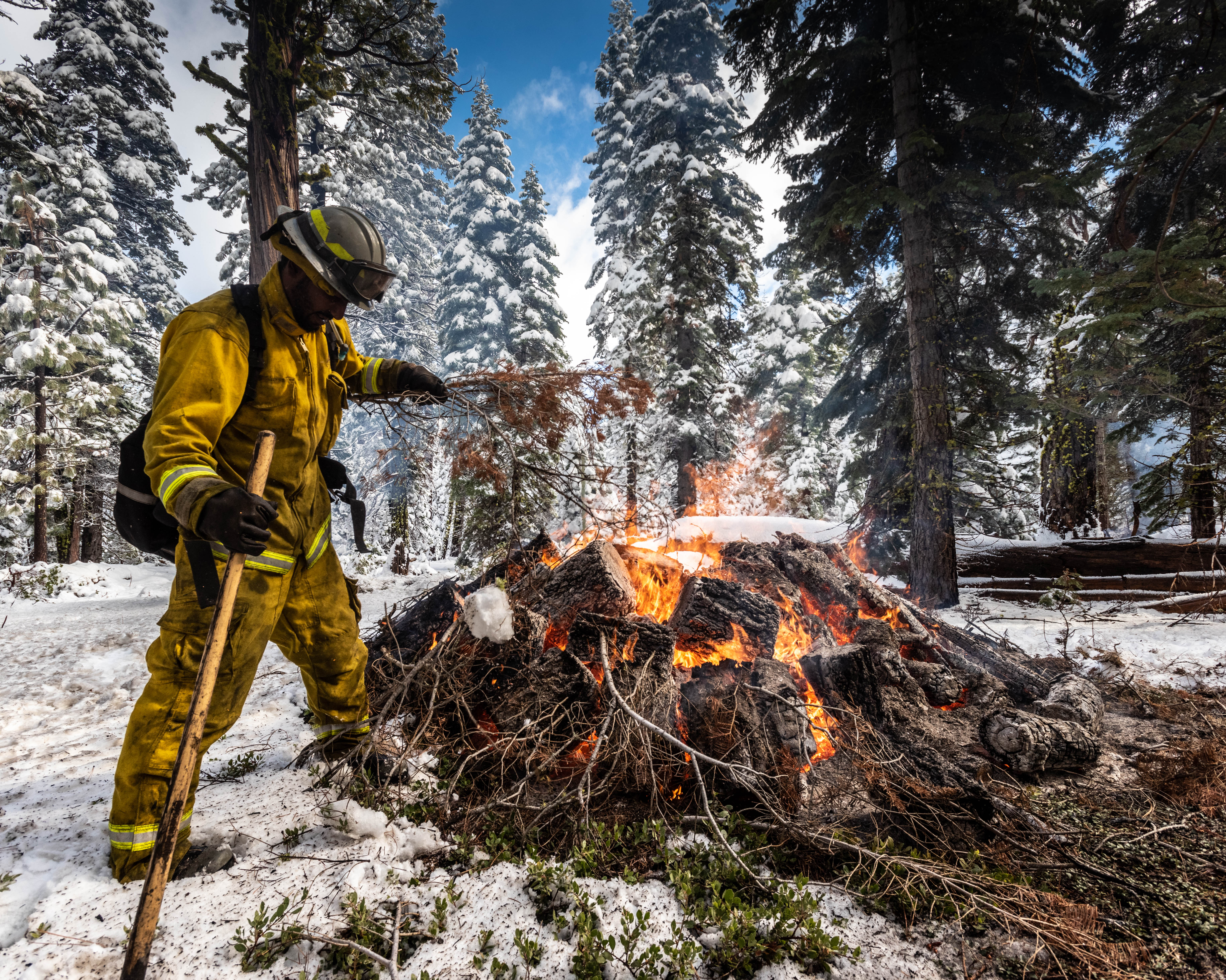Forest Management - Prescribed Fire

Forest Management
Fire is a natural process in Sierra Nevada forests that has been absent since fire suppression and is an important part of forest management in California State Parks. Forest management projects are designed to balance many specific goals including: protect large trees, reduce risk of crown fires, and promote valuable components of wildlife habitat. Prescribed fires promote variety in forest structure including tree spacing variety and open gaps that mimic the native fire regime. Forest thinning and pile burning prepare for safe prescribed fires and wildfires that can be safely managed.
The Role of Fire
Fire benefits forest structure, composition and function creating habitat mosaics while recycling nutrients for surviving trees and vegetation. A fire regime of varying intensity and severity is beneficial for forest ecosystem diversity.
Burn and They Will Come
Fire-killed trees are valuable for wildlife habitat. Tree mortality, as a result of fire, is an important part of forest ecosystem function. Snags provide many successive years of wildlife use; dying trees attract bark beetles and wood borer beetles, that draw in different bird species feeding on them. Dead trees attract other wood borer insects, and are easier to burrow into for cavity nesting birds. An open forest canopy allows more sunlight to reach the ground, which encourages shrub growth, which further diversifies habitat. A varied forest structure provides a mosaic of habitat conditions that are key to healthy ecosystems.
Prescribed Fire
Prescribed fire is a highly effective tool used in forest management for forest restoration, wildfire protection and wildlife habitat enhancement. Fire is a natural process in Sierra Nevada forests, and integrating its dynamic nature back into the ecosystem provides for many forest health and wildlife habitat benefits in the State Park. Prescribed fire protects clean water by reducing the size and intensity of future wildfires.
